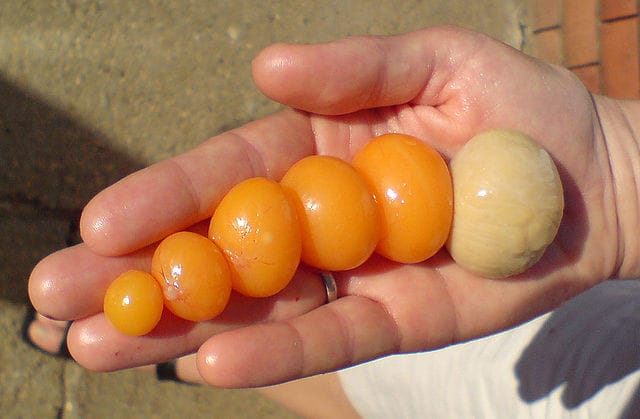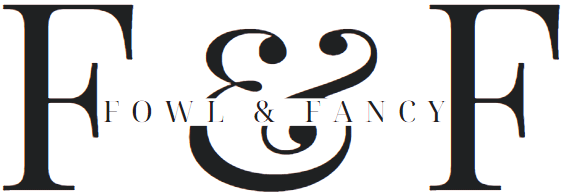01 Formation Time
It typically takes a chicken between 24-26 hours to produce a new egg from ovulation to laying. This time can be longer or shorter depending on the breed and individual chicken.

02 Shell Colors
Eggshells can come in a variety of different colors from white, to varying shades of brown, blue, green, and even pink.
The color of the egg is mainly determined by the breed. For example, Easter Eggers, as the name suggests, can lay either blue or green shells. Australorps, Barred Rock, and Wyandottes all lay varying shades of brown while Copper Marans lay a dark chocolatey brown colored egg.
Many online chicken hatcheries will separate their chicken breeds by the color of eggs the hens lay.

03 Color Determination (It’s all in the ears)
The color of a chicken’s earlobes often correlates with the color of the eggs they will lay. Typically, chickens with white earlobes will lay white eggs, while those with red earlobes will lay brown. Some blue egg-layers even have blue ears!
04 Pores
While chicken eggs appear to be solid, they actually contain many small pores. These pores allow for essential gas exchange while also helping to protect against bacterial invasion.
05 Float Tests for Freshness
A fresh egg sinks in water, while an older egg floats due to the air cell’s enlargement, making it a simple test for freshness.
06 Albumen Color
The albumen, or egg white, is the clear, viscous substance that surrounds the egg yolk within an eggshell. While typically a clear-ish color, the albumen color can range from perfectly clear to cloudy and almost white. This change from clear to cloudy typically occurs as an egg ages and is due to a change in the pH level. The pH level change itself is due to loss of carbon dioxide within the egg which slowly diffuses out of the pores of an egg as it ages.
07 Yolk Color
The color of the yolk is influenced by the hen’s diet. A diet rich in carotenoids, like beta-carotene found in leafy greens, can result in a darker yellow or orange yolk.

08 Egg Teeth
Developing chicks have a small, temporary egg tooth on their beak, which helps them break through the eggshell during hatching.


